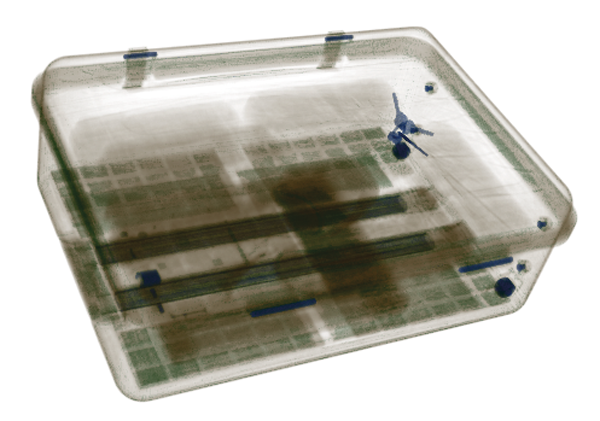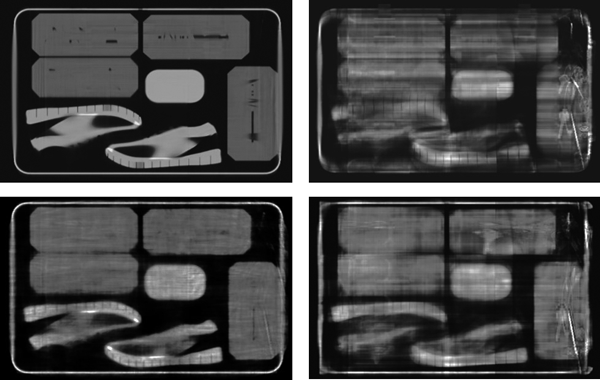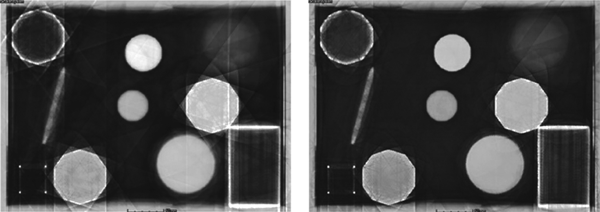


In order to increase airport safety, Computer tomographic (CT) methods are being further developed at Fraunhofer EMI. CT offers a good approach to meet the challenging ECAC guidelines for hand luggage scanning. A reconstruction algorithm, developed at EMI for “strongly under-determined datasets” (less than 50 projections instead of several hundred up to a few thousand projections as in classical computer tomography), is promising in efficiently evaluating X-Ray image data that was obtained from multi-view equipment with tomographic methods.
These strongly under-determined datasets show even more interferences (artifacts) than the conventional CTs. EMI is developing corrective methods which aim to reduce interfering factors that may occur during the reconstructive process. These methods are complemented by the optimization of the image acquisition geometry, meaning all possible spatial directions are simulatively tested for their suitability for taking the two-dimensional X-ray image data. Basic conditions of airport practice, such as conveyor belt handling and limited space availability at checkpoints, are taken into account. Additionally, the reconstruction time for the algebraic algorithm can be reduced to a few seconds and adjusted to the limited examination time.
The obtained reconstruction results can be used in various ways. The additional 3D-information makes it possible to locate material classes spatially - an essential step towards Automated Threat Recognition (ATR). The good demarcation of metal objects in the reconstruction improves the 2D-based image processing. These areas are removed from the reconstruction volume and are then re-projected onto the existing perspective. Thereby, overlaps which may hinder the identification of dangerous items can be dissipated.
The goal is to eliminate the need to unpack all electronic devices and to inspect the luggage manually in order to increase passenger comfort as well as safety at the same time.